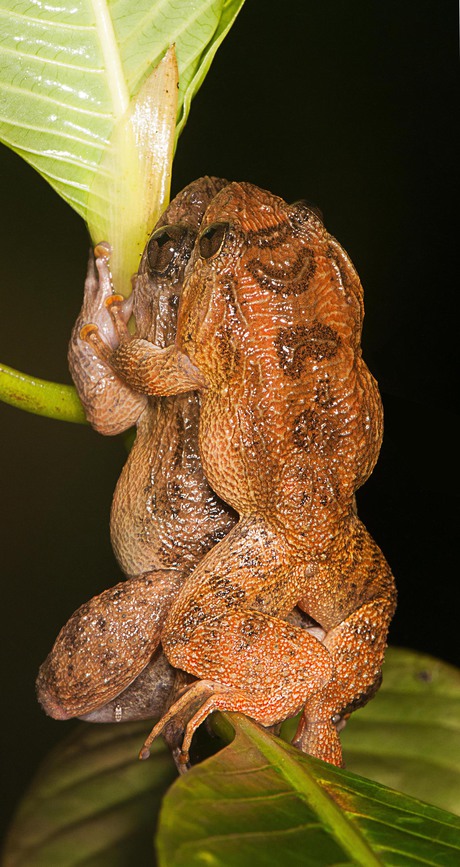Do the dorsal straddle — a new mating position in Indian night frogs

There are six mating positions (amplexus modes) shared between the almost 7000 species of frogs and toads found worldwide. However, scientists have discovered that the Bombay night frog (Nyctibatrachus humayuni), which is endemic to the Western Ghats Biodiversity hotspot of India, mates differently.
The discovery of the seventh mating position, now known as the ‘dorsal straddle’, was made by a team of scientists from University of Delhi, India’s National Centre for Biological Sciences and the University of Minnesota. Their research was conducted over 40 nights in the field between 2010 and 2012 and has since been published in the journal PeerJ.
In Bombay night frogs, the male does not embrace the female but straddles over her back, with his hands holding or resting on substrates such as a leaf, branch or tree trunk. At this moment, the male appears to release sperm over the female’s back and then moves away. After that, the female lays her eggs, which are then fertilised by the sperm trickling down her back. There is thus no contact between the sexes during egg-laying and fertilisation, in contrast to other frogs.

The new mating position was not the only interesting observation made by the researchers. Female Bombay night frogs were found to call during breeding season — an occurrence in only 25 species worldwide. Fights between competing males were common — when a male intrudes the territory of another male, a fight ensues until the intruder is forcefully made to leave. The team also observed eggs of a Bombay night frog being eaten by a snake — the first documented observation of snakes eating frog eggs in India.

“This is a remarkable frog with an unprecedented reproductive behaviour, which is unique for a number of reasons,” said Professor SD Biju from University of Delhi, who led the study. “This discovery is fundamental for understanding the evolutionary ecology and behaviour in anuran amphibians.”
Babies of stressed mothers likely to get their teeth earlier
Maternal stress during pregnancy can speed up the timing of teeth eruption, which may be an early...
Customised immune cells used to fight brain cancer
Researchers have developed CAR-T cells — ie, genetically modified immune cells manufactured...
Elevated blood protein levels predict mortality
Proteins that play key roles in the development of diseases such as cancer and inflammation may...





